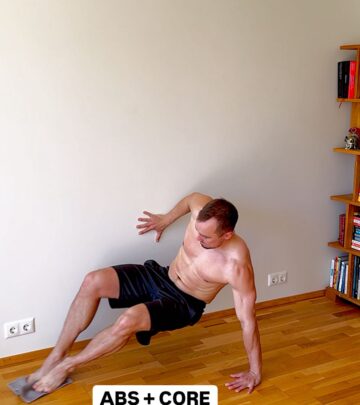Shaping Fast Bowling: Davis’s & Wolff’s Laws In Action
Train fast bowlers with scientific load methods for power, strength, and injury prevention

Image: Instagram
Fast bowling is not simply about raw speed or brute force—it’s the art of engineering the body to withstand extreme loads while maintaining precision. The innovative approach deployed by PaceLab Limited leverages two biological cornerstones, Davis’s Law and Wolff’s Law, to reshape not only the technique but also the structural integrity of a fast bowler’s body. A recent post by PaceLab stated, “Tissue adapts to the direction and intensity of load. If you want bowlers who are fast and robust, train the body to handle the exact forces they’ll face.” This statement is a rallying cry for modern cricket coaching, encouraging a targeted training regimen that infuses every movement with purpose.
Understanding The Scientific Principles
Davis’s Law and Wolff’s Law form the backbone of this scientific training model. Davis’s Law explains that the soft tissues—muscles, tendons, ligaments, and fascia—remodel themselves in response to the stress imposed by mechanical loads. In simple terms, these tissues lengthen, shorten, or strengthen as they adapt to repeated forces. On the other hand, Wolff’s Law deals with bone. It states that bone architecture remodels along the line of applied forces, balancing strength with the demands being placed on it. Together, these principles illustrate that technique, force direction, and even recovery are not mere training components but essential biological inputs shaping an athlete’s performance.
Training For Real-world Demands
The PaceLab system embodies this scientific philosophy by profiling fast bowlers through carefully structured overload and adaptation drills. Instead of relying solely on large compound lifts—which, while supportive, can lead to a bodybuilder-like focus rather than true athletic power—the training targets the very forces experienced on the pitch. By developing a programme that mimics the high variability, directional load, and eventual recovery the body undergoes during play, PaceLab ensures that the adaptation is both specific and robust.
One of the standout messages from PaceLab’s recent post is a caution against the trap of fixed technical routines. Traditional coaching methods often chase cosmetic changes through endless repetition, a strategy that might refine a bowler’s appearance but does little to instil the deep, adaptive mechanics required in high-pressure match scenarios. As echoed in prior social media updates by PaceLab, the goal is not a perfect, static technique but a system where the body reorganizes itself through “repetition without repetition.” This means every drill is varied, every load is purposeful, and each session is designed to push the body exactly how it will be challenged during a game.
Scientific Laws In Action
The application of Davis’s and Wolff’s Laws in fast bowling is not an abstract theory—it is a practical, evidence-based approach that translates into measurable improvements in performance. For instance, the PaceLab Limited system profiles each bowler to apply targeted overload on key attractors. This involves harnessing methods like controlled sprinting, bracing, and bounding to impose specific forces on the soft tissues and bones. The idea is simple: by training under conditions that mirror actual match-day loads, bowlers develop not only strength and speed but increased resistance to injury.
Steffan Jones, a well-known figure in the cricket coaching circuit, has recently been associated with this scientific training approach. His advocacy underscores the importance of understanding the underlying biological principles rather than blindly chasing cosmetic movement patterns. As noted in his interviews and social media commentary, robust fast bowling is built on adaptability—a quality best honed by addressing the very forces that act upon the body.
Innovative Fast Bowling Training Strategies
Beyond the fundamental laws, PaceLab’s contemporary training sessions integrate drills that focus on a series of incremental yet interrelated performance markers. For example, a skill stability complex drill—recently highlighted on Instagram—emphasizes a rotation through several lanes, each designed to target a key technical anchor. Whether it’s maintaining posture during the impulse stride or enhancing precision at the moment of front foot contact, the drills are sequenced to impose global stress without causing excessive central nervous system fatigue.
Another critical component of the approach is the concept of load variability. By alternating between high-load, contrast drills and lower intensity fine-tuning exercises, fast bowlers are trained to maintain robust movement patterns under diverse conditions. This method not only builds power but also reinforces a deep neuromuscular connection, ensuring that the techniques learned in training transfer seamlessly to the pressure and unpredictability of game situations.
The scientific training model also places a heavy emphasis on sensory engagement. Interventions like using stroboscopic glasses or performing drills under altered environmental conditions further train bowlers to adapt when visual cues or proprioceptive feedback shifts. In effect, this holistic method reshapes the bowler’s body and movement system so that the load specifications of each delivery are met with resilient, adaptive responses.
As the cricketing world evolves, the integration of biomechanical principles with traditional coaching continues to gain traction. The PaceLab system, guided by timeless biological laws, is paving the way for faster, more resilient bowlers who can sustain high-level performance while minimizing the risk of injury. This paradigm shift in training methods is not just a trend—it’s a transformative approach that redefines what it means to build athletic strength and efficiency.
Whether you are a coach, player, or an ardent follower of cricket’s evolving methodologies, the message is clear: to shape a fast bowler’s body, one must work with the natural laws of adaptation. By embracing strategic overload, variability in training, and a deep respect for the science behind movement, the future of fast bowling looks not only faster, but smarter and more resilient.
Read full bio of Joyce














